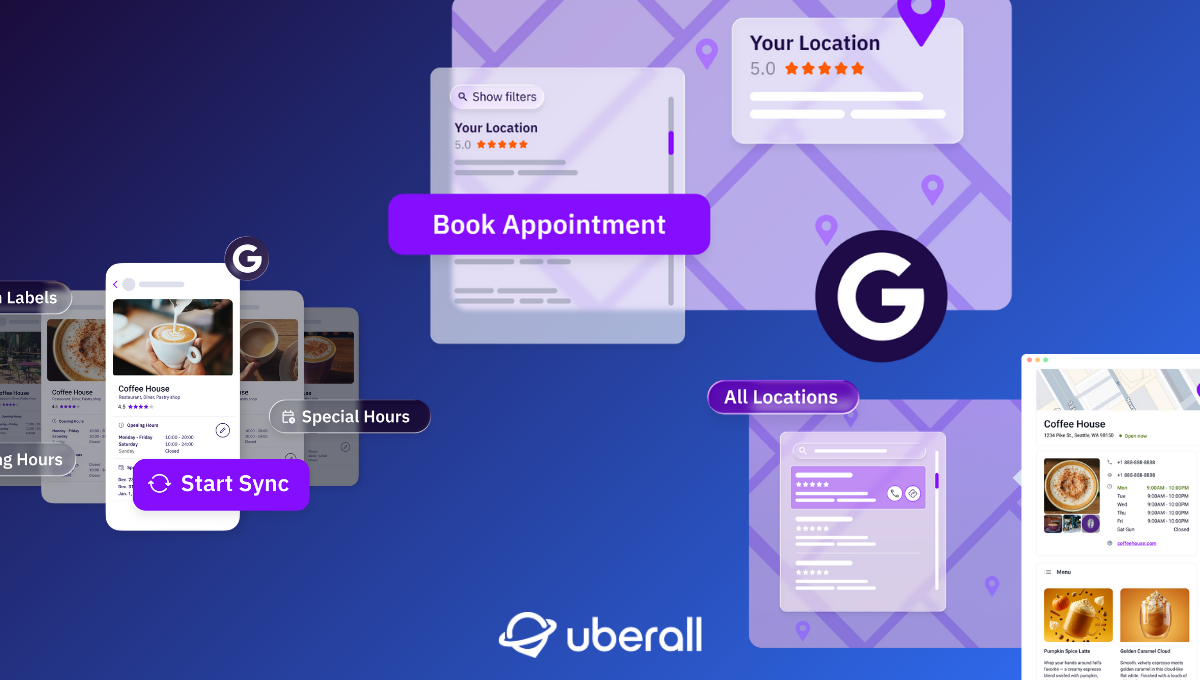
How to Respond to Negative Reviews (Templates Included)
Nobody likes receiving negative reviews, but effective review management can transform criticism into a valuable source of feedback. Here’s how to do it!
Negative reviews are part and parcel of doing business: whether it’s a late delivery or a customer unhappy with a product. Sometimes, it’s not even anyone’s fault—but how you address these hiccups can make all the difference.
Consumers enjoy voicing their opinions on their experiences, all more easily than ever before—and with greater reach. On the other hand, 75% of consumers ‘always’ or ‘regularly’ read online reviews, trusting them almost as much (or even more) than their family’s or friends’ advice.
So, while receiving a negative review can often be uncomfortable, it pays to stay objective and adopt a positive, solution-oriented approach. After all, a negative review can be an opportunity to learn and improve, to engage and communicate with your customers, and to find effective solutions.
Trends in Review Behavior
Before diving into review management, it’s crucial to understand key trends shaping consumer feedback today—from review volume to response expectations.
- Review Volume: While businesses often receive more positive reviews overall, the disparity between the number of negative and positive reviews is noteworthy. Many positive reviews are solicited through incentives, whereas unhappy customers tend to leave negative feedback spontaneously.
- Impact on Purchasing Decisions: Approximately 89% of consumers report that reviews influence their purchasing decisions. This underscores the importance for businesses to actively manage their online reputation.
- Response Importance: Consumers increasingly expect brands to respond to reviews, with 94% anticipating a reply to their negative feedback. Businesses that engage with reviewers can mitigate the impact of negative reviews and even turn them into opportunities for improvement.
Increased Likelihood of Negative Reviews
Recent trends indicate that customers are leaving more negative reviews than in previous years. Several factors contribute to this shift, reflecting both changes in consumer behavior and the evolving landscape of online reviews.
- Emotional Responses: Research shows that customers are more emotionally charged by negative experiences, leading them to express dissatisfaction more readily than satisfaction. This heightened emotional response results in a greater tendency to leave negative reviews without prompting. In fact, customers are 21% more likely to leave a review after a negative experience compared to a positive one.
- Consumer Expectations: As customer expectations rise, particularly regarding service quality and product reliability, any failure can prompt a negative review. Poor customer service remains a significant driver of bad feedback, with many consumers feeling compelled to share their grievances publicly when they perceive inadequate support or unfulfilled promises.
- Accessibility of Reviews: With nearly 89% of consumers reading reviews before making purchases, the visibility and accessibility of online platforms encourage individuals to share their experiences—both good and bad. The ease of leaving a review online contributes to the increase in negative feedback as consumers seek to inform others about their experiences.
What Leads to Negative Reviews?
Negative reviews can stem from a variety of issues, both big and small. Sometimes, it’s about unmet expectations—a product didn’t match the description, or a service wasn’t as fast as promised. Other times, it’s the result of poor communication, like unanswered inquiries or unclear policies.
Even factors beyond your control, such as supply chain delays or technical glitches, can leave customers frustrated. At the core, most negative reviews arise when customers feel their needs weren’t prioritized or resolved effectively.
The most common motivations for leaving a negative review include:
- Asking the company to acknowledge a specific concern or problem
- Encouraging other consumers to make better purchasing decisions
- Helping the company improve its products, services, or customer experience
Most of the time, even a negative reviewer holds good intentions. Rather than trying to take a business down, they are more likely to be seeking acknowledgement and some form of resolution.
In other words, negative reviews stem from an inherent desire to find trustworthy brands; which means that effective online review management can play an outsized role in establishing that reputation.
Review Management: A Vital Part of Reputation Building
Genuine review management requires significant investments of time and resources. However, these are investments with excellent prospects of paying off: besides engaging with individual users, responding to reviews also sends clear trust signals to potential customers and search engines.
Whitespark’s Local Search Ranking Factors report confirmed this connection, identifying review signals as the third most impactful ranking factor. The only two factors they found more significant were Google Business Profiles and On-Page SEO.
Resisting Temptation When Responding to Negative Reviews
Negative reviews can present an opportunity, provided you maintain a professional, objective approach from the outset.
First of all, take a step back. Nobody likes a negative review, but take time to reflect before you act. Remember that even negative reviews, though uncomfortable, likely include a constructive element. However tricky, don’t take it personally: an emotional or defensive response won’t give the reviewer the acknowledgement they seek or provide a resolution, but will harm your reputation.
Likewise, you should avoid filtering negative reviews. Engage with each review on its own terms. Review gating, in which companies solicit positive reviews while putting up barriers against customers leaving negative feedback, usually comes across as manipulative. Besides restricting your ability to improve, those barriers can seriously hurt your online reputation, and often violate review platforms’ terms of service.
Responding to Negative Reviews in Three Simple Steps
Now that we’ve covered what not to do, let’s shift our attention to practical action you should take when responding to negative reviews.
The process for addressing negative reviews can be distilled into a few simple, actionable steps that any business can follow to turn a setback into an opportunity.
- Take the heat out of the situation with balanced, objective analysis.
- Drill down and get to grips with the underlying issue.
- Seek a resolution with a tailored, professional, and empathetic response.
Based on our experience, we developed a robust, three-step strategy for managing feedback.
Step #1: Understand the Issues
So, you’ve received a negative review online. Take a breath and read it through carefully, locating key details to gain a clear picture of the situation. If the customer has taken the time to raise a legitimate concern, chances are you can still bring them back around.
Perhaps you amended your opening hours, but forgot to update your online listing. Most customers will understand. By responding directly, acknowledging the issue, and communicating your solution, you can foster a relationship, win back trust and earn their loyalty moving forward.
Step #2: Evaluate the Intent
Before you formulate a response, ask yourself whether the review appears both legitimate and constructive. If both are true, move on to Step #3.
On the other hand, reviews that appear overly aggressive, fake, or breach that review platform’s policies call for a different approach. Remain professional and take action without engaging directly. In fact, sites like Google, Foursquare, Yelp, Tripadvisor, and Facebook have policies against certain types of content in reviews.
Use the platform’s reporting system if you identify any of the following issues in reviews:
- Offensive or inappropriate language
- Spam, abuse, harassment, or threats
- Reviews for the wrong business
- Retaliation from former employees or rejected job applicants
- Malicious reviews from competitors
- Privacy violations, such as disclosing detailed personal information
Given the power reviews wield over a brand’s reputation and visibility online, some dubious actors have turned to fake reviews. Don’t brush them off: take action to uphold your hard-earned ratings and reputation. And if the review includes legally sensitive information, inform your legal team immediately; they are best placed to advise on next steps.
Step #3: Provide an Appropriate Response
Valid and constructive reviews deserve tailored responses. Show empathy for their inconvenience, remain professional, stick to the facts, and outline your proposed solution. You should aim to acknowledge and show you understand the issue, apologize if necessary, communicate the action you’re taking to make things right, then offer suitable contact details for that customer to follow up further.
Of course, the exact details of how you should respond depend on the topic raised in the negative review.
If the reason for the negative review is clear, valid, and fixable, you should acknowledge the issue, apologize when appropriate, and explain your proposed remedy. Even if that reviewer doesn’t take you up on it, other users will see your proactive approach.
{Username}, We're sorry to hear our {service/product} at {business} did not live up to your expectations. We want to follow up with you directly so we can figure out what happened, and how we can make it up to you on a future visit. . When you have a moment, please email us at xxx@xxx.com and we’ll reach out to your immediately.
If the reason for the negative review is clear and valid, but not fixable, you should still acknowledge the situation and apologize, then explain why an immediate, practical resolution might not be possible. Outlining practical steps for future improvements can go a long way.
Thank you for taking the time to share your concerns with us. Though it’s never easy hearing we’ve disappointed one of our customers, we appreciate you taking the time to share where we fell short, so we can improve going forward. Should you decide to give us another chance, and we sincerely hope you do, please reach out to us at {email address} so we can give you an extra special experience.
If the review doesn’t provide enough detail for you to act,**or can’t be resolved via the review site,** provide contact information to continue the conversation elsewhere. That way you can engage further while keeping potentially sensitive details private. At the same time, you’re publicly demonstrating a commitment to finding a resolution.
{Username}, oh no! Great customer service is something we always strive for at {company name}. We’d like to get more details so we can make your next visit a better one – please send your contact info and reference this review at xxx@xxx.com.
We’re so sorry to hear that this happened to you. We’d like to know more so we can make things right. Please send us an email at xxx@xxx.com so we can follow up with you directly.
Bonus Step: Don’t Forget the Good Reviews!
Although negative reviews can be trickier to deal with and require more attention, that doesn’t mean you should neglect positive reviews. After all, 86% of consumers say they prefer brands that respond to all reviews.
Establishing trust and building a strong reputation is all part of making a name for yourself as a local favorite. So join your customers in celebrating your successes, and acknowledge the time and thought they put into submitting a positive review. Not only will this reinforce their positive impression of your brand, you’re also sending an unmistakable signal that you value your customers.
Conclusion
The so-called electronic word of mouth (eWOM) continues to prove pivotal for modern businesses. In fact, they’re such a trusted form of social proof that brands cannot afford to neglect them.
Just as maintaining listings on many sites boosts a location’s visibility, brands should monitor and manage a wide range of review platforms to forge a positive online reputation.
Responding promptly, appropriately, and at scale across numerous platforms can seem daunting, though—especially for companies with multiple locations. Unfortunately, today’s discerning consumers won’t accept sub-par engagement strategies, especially if they took the time to share their experience.
In this context, well-tailored review response templates provide a powerful tool, especially for handling negative reviews, striking the right tone with a swift, efficient response. And although you should tailor every response to avoid coming across as robotic or disinterested, impactful templates provide a valuable starting point.
Leveraging review management tools can further streamline the process, making it easier to stay on top of feedback and foster better customer relationships. Reach out if you want to hear more about this!
Ready to Transform Your Business?
Connect with our partnership team to learn how Uberall can help you achieve similar results. Get a personalized consultation and discover the opportunities waiting for your business.
Resources











